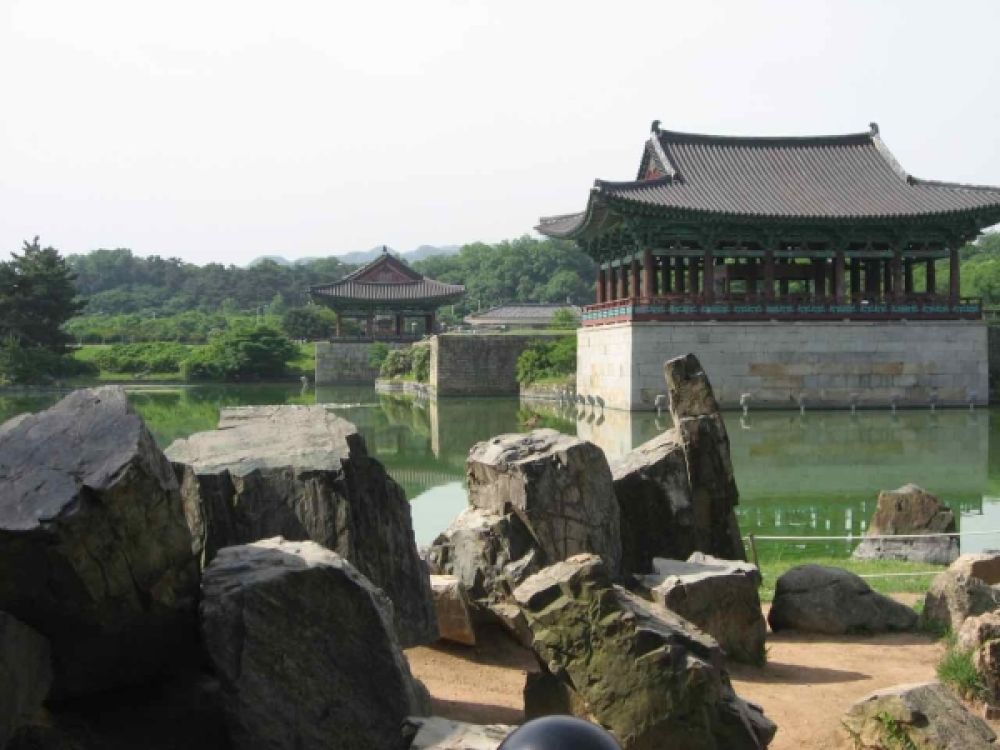The Gyeongju Historic Areas in Gyeongju, South Korea, encompass a remarkable concentration of outstanding examples of Korean Buddhist art, including temples, pagodas, and palaces. These reflect the cultural, philosophical, and technological developments of the region, from the 7th to the 10th century. The historic areas are divided into five zones: Namsan, Wolseong, Tumuli Park Belt, Hwangnyongsa, and Sanseong Fortress area. Namsan is significant for its mountainous terrain adorned with religious monuments, temples, and stupas. The Wolseong area is famous for the Anapji Pond and the site of the ancient palace. Tumuli Park Belt features a cluster of royal Silla tombs. The Hwangnyongsa site holds the ruins of what was once a massive temple complex, and Sanseong Fortress area contains remnants of fortresses and walls protecting the ancient city. These sites collectively showcase the cultural heritage of the Silla Kingdom, providing deep insights into the prehistoric and early historic times of Korea. Visitors can marvel at the ancient engineering, spiritual devotion, and the tranquility that prevails at these sites.

